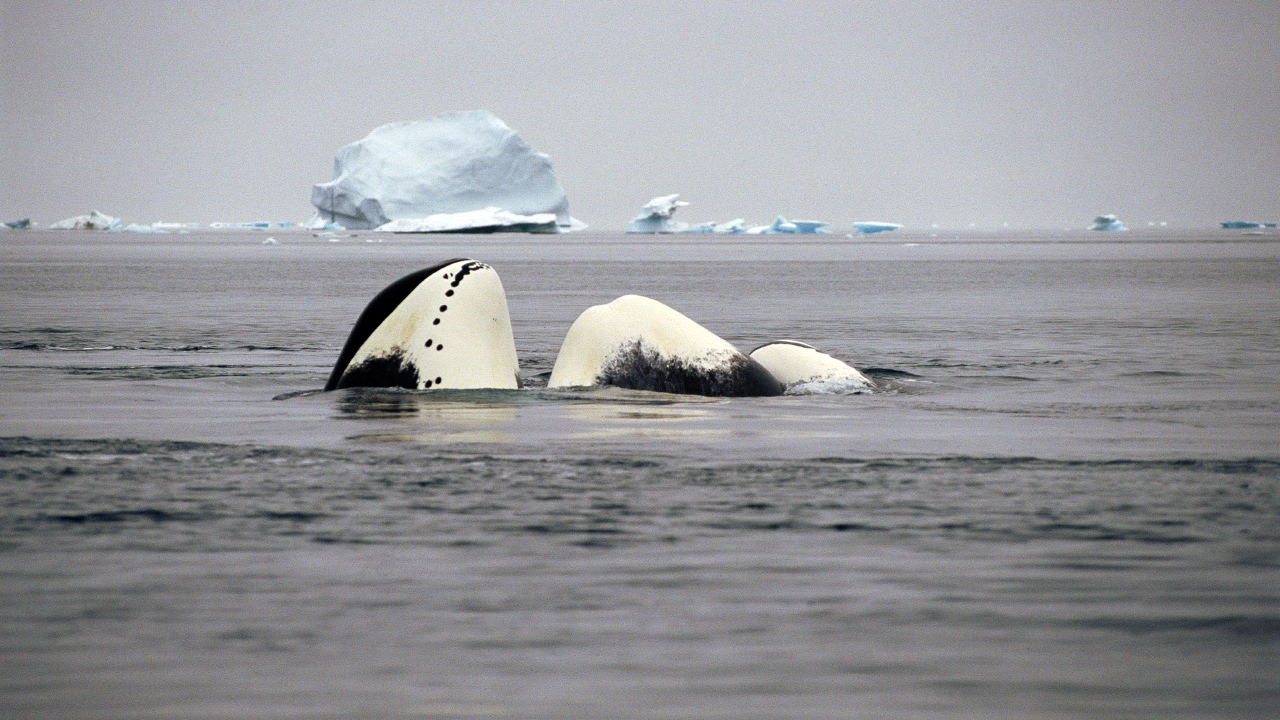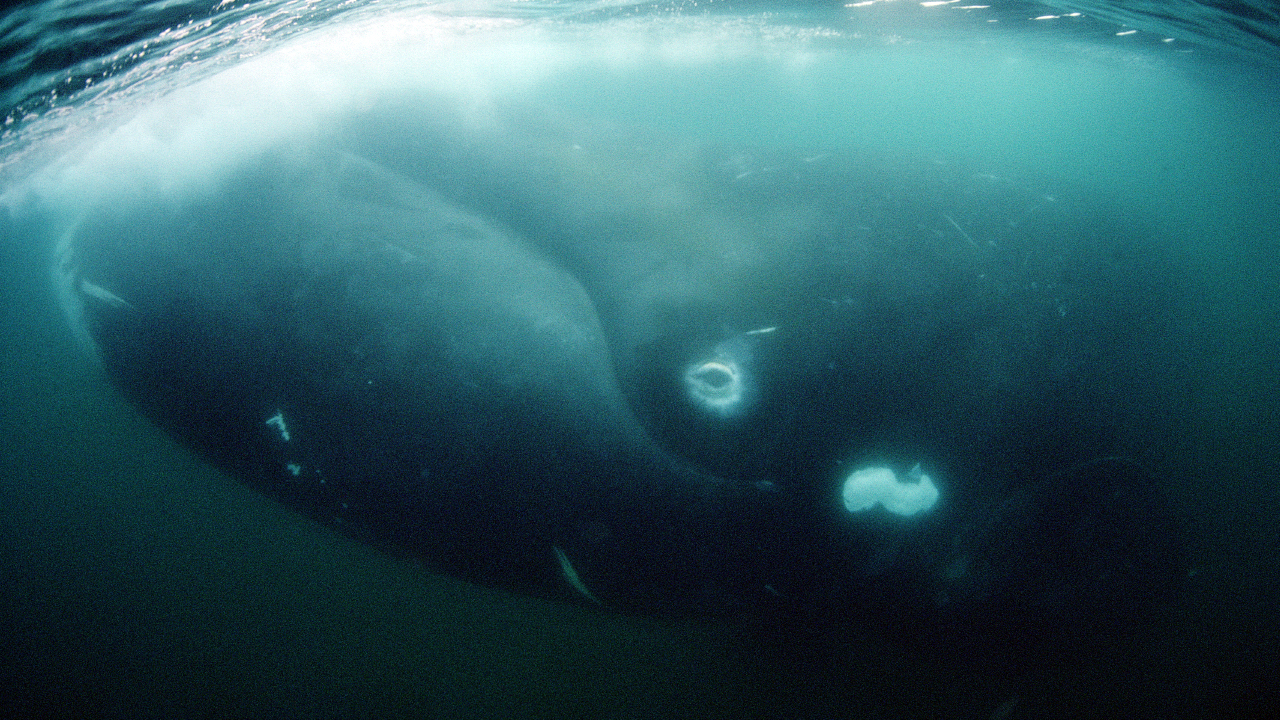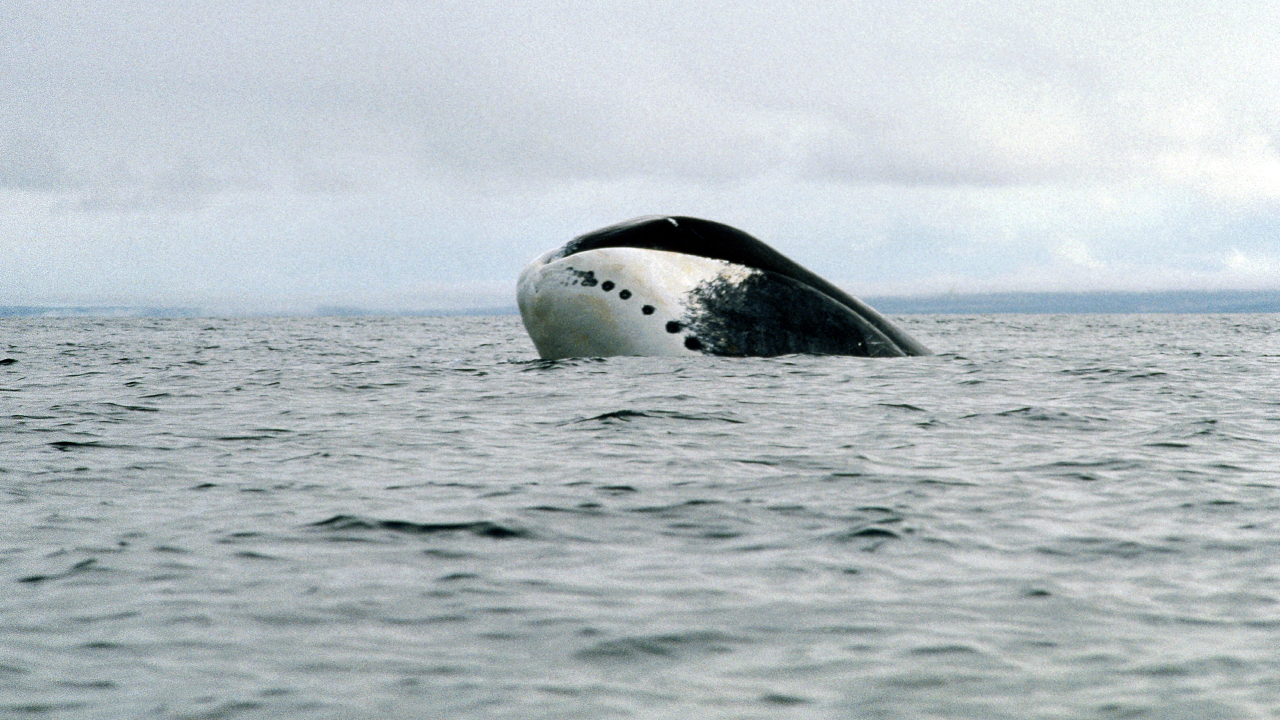Bowhead whale
Balaena mysticetus
-
 The bowhead whale is an extremely large baleen whale species of the genus Balaenidae and ranges throughout the Arctic. Iceland is located at the southern edge of its range. Bowhead whales feed first and foremost on small crustaceans, with krill and copepods forming the majority of their diet. The greatest availability of food is during the summer when the whales spend a great deal of time feeding. An average-sized bowhead whale needs around 100 tonnes of crustaceans a year to thrive.
The bowhead whale is an extremely large baleen whale species of the genus Balaenidae and ranges throughout the Arctic. Iceland is located at the southern edge of its range. Bowhead whales feed first and foremost on small crustaceans, with krill and copepods forming the majority of their diet. The greatest availability of food is during the summer when the whales spend a great deal of time feeding. An average-sized bowhead whale needs around 100 tonnes of crustaceans a year to thrive. -
 Bowhead whales use a method called skimming when feeding, i.e. they filter food from the sea while swimming. The krill stick to the baleen plates, and the water is ejected out of the sides of the mouth. They are able to hunt prey at any depth, from the surface to the bottom of the sea. The bowhead whale has about 350 pairs of black baleen plates with silver-coloured bristles hanging from the jaws. The bowhead whale’s baleens are the longest of any whale and can be as much as 4.5 m long and 36 cm wide.
Bowhead whales use a method called skimming when feeding, i.e. they filter food from the sea while swimming. The krill stick to the baleen plates, and the water is ejected out of the sides of the mouth. They are able to hunt prey at any depth, from the surface to the bottom of the sea. The bowhead whale has about 350 pairs of black baleen plates with silver-coloured bristles hanging from the jaws. The bowhead whale’s baleens are the longest of any whale and can be as much as 4.5 m long and 36 cm wide. -
 Bowhead whales are a solitary species but can on occasion be found in smaller groups of up three animals. There are, however, known cases of larger groups, or up to 60 together. Such large groups probably only form when the availability of food is exceptionally large.
Bowhead whales are a solitary species but can on occasion be found in smaller groups of up three animals. There are, however, known cases of larger groups, or up to 60 together. Such large groups probably only form when the availability of food is exceptionally large. -
 Bowhead whales can dive for almost an hour, but dives usually last 4–15 minutes. They can dive down to at least 155 m. Bowhead whales breathe air at the surface of the water through 2 blowholes located near the top of the head. They spout about 1–2 times per minute at rest, and 4–6 times per minutes to prepare for a dive. Their blow has a distinctive v-shaped form.
Bowhead whales can dive for almost an hour, but dives usually last 4–15 minutes. They can dive down to at least 155 m. Bowhead whales breathe air at the surface of the water through 2 blowholes located near the top of the head. They spout about 1–2 times per minute at rest, and 4–6 times per minutes to prepare for a dive. Their blow has a distinctive v-shaped form. -
 The bowhead whale is responsible for numerous world records which sets it apart from other whales. For example, it is the longest lived whale, as it can reach an age of more than 200 years; it also has the longest baleen plates and the thickest layer of blubber. No other whale has skin as thick as the bowhead whale. The skin thereby reduces heat loss and also forms a protective layer against injury when the whale rubs up against the ice.
The bowhead whale is responsible for numerous world records which sets it apart from other whales. For example, it is the longest lived whale, as it can reach an age of more than 200 years; it also has the longest baleen plates and the thickest layer of blubber. No other whale has skin as thick as the bowhead whale. The skin thereby reduces heat loss and also forms a protective layer against injury when the whale rubs up against the ice.
